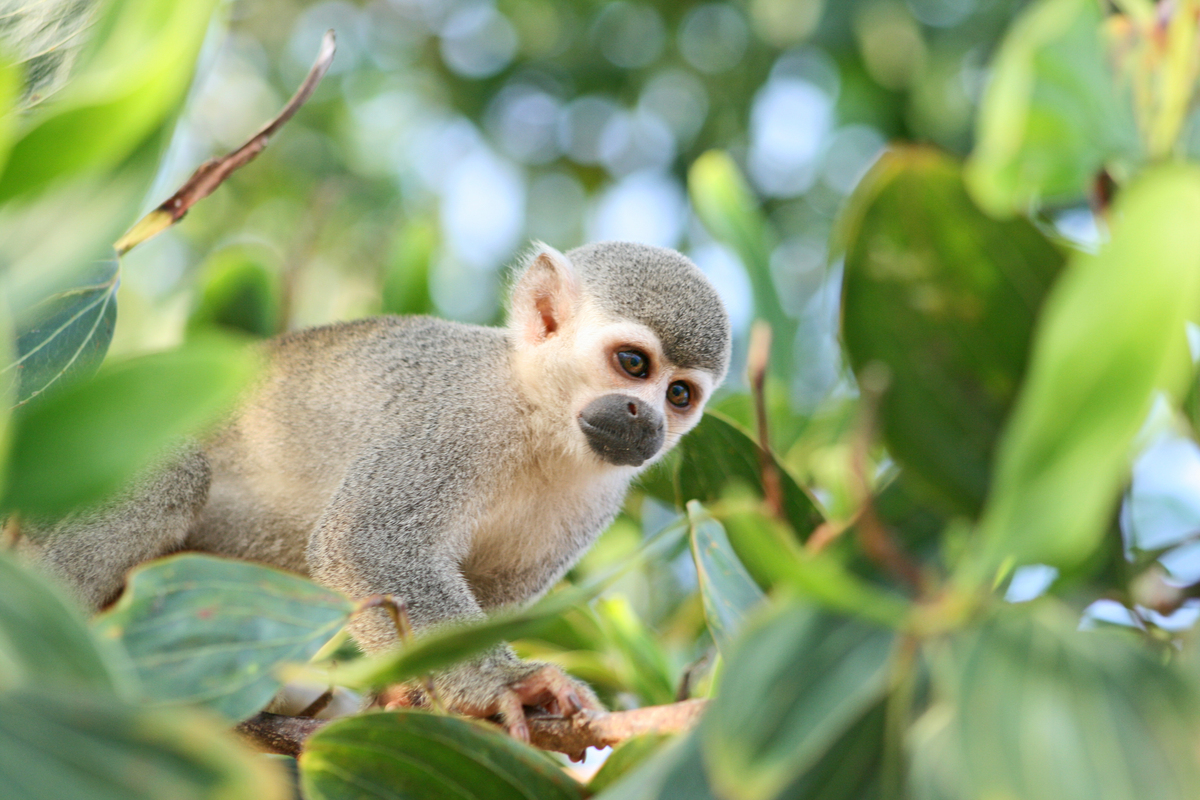Andes, Amazon, & Orinoco
Why WCS?
On Our Strategies
To Create and Strengthen Protected Areas and Indigenous Territories
We work with governments to strengthen protected area systems and promote sustainable use of natural resources in indigenous territories, other community-managed lands and private lands. Across the Andes-Amazon, we assisted in securing management plans for over 6 million hectares, while in Bolivia alone we have helped secure title to 1.5 million hectares of indigenous lands.
To Research, Monitor, and Conserve Key Wildlife Species
We conduct wildlife research and monitor wildlife populations to generate data for sound natural resource management decisions. For example, in the Brazilian Amazon our researchers discovered that giant South American river turtles use different kinds of vocal communication to coordinate their social behaviors. This discovery informs management recommendations made by our Amazon Waters Initiative.
To Build Local Capacity for Conservation Planning, Management, and Monitoring
136 staff, 95 percent local
Our field teams are composed of 136 professionals from a variety of disciplines, with 95% of them coming from the region. Over the past 12 years, we have supported over 200 undergraduate and graduate research theses as part of our commitment to train the next generation of Latin American conservation professionals.
To Promote Sustainable Livelihoods
As development reaches previously remote areas, Latin America is transforming at an unprecedented rate and scale. The sustainability of the resource base that underpins the economy, the natural resources upon which millions of poor people depend for their livelihoods, and the region's unparalleled biodiversity are all threatened. WCS is committed to finding mutually beneficial solutions that integrate conservation and human wellbeing through sound conservation planning that engages multiple stakeholders. In the Colombian Orinoco, we are planning for a more sustainable future by working with governments, communities, and the private sector to balance conservation, livelihoods, and economic growth.
To Conserve Important Wetlands and Manage Fisheries
Millions of residents of the Amazon Basin depend upon fish as their principal source of protein. Fish are "animal sentinels"—they are the chief indicators of ecosystem health for the Basin as a whole. Through the Amazon Waters Initiative, our goal is to maintain the connectivity of this vast, interlinked, and dynamic freshwater system, supporting human wellbeing, wildlife, and the environments on which they depend. In Peru, we supported the Loreto state government to design and implement a comprehensive commercial fisheries monitoring system that encompasses 80% of all the fisheries in the Peruvian Amazon.
To Mitigate the Impacts of Climate Change and Infrastructure Development
Large-scale challenges such as climate change and infrastructure development require engagement with national and international policies and political processes. Across the Andes, Amazon, and Orinoco, WCS is working with governments to develop strong policies and regulations to ensure that environmental impacts of large-scale infrastructure projects and extractive industries are thoroughly analyzed and that best practices to minimize and mitigate these impacts are followed. In Colombia and Peru, we are supporting the establishment of policies and developing tools to ensure no net loss of biodiversity. In Ecuador, we are supporting local residents and government officials to develop climate-smart plans for their communities in the Andean foothills.
In Action
In 2001, Bolivia's Tacana Indigenous People's Council asked WCS to help them to develop and implement a sustainable plan to manage caiman in their territory. With our assistance, the caiman hunters were able to establish a successful business - sales of caiman skins and meat in four Tacana communities contributed $52,200 to 29 families in 2014, and $66,600 to 37 families in 2015. Caiman numbers in the territory are increasing, confirming that the annual harvest plan is sustainable.
Related News
-
August 10, 2023
Amazon Countries Pledge Greater Cooperation in Addressing Environmental and Human Rights Issues
Leaders of the Amazon countries meeting in Brazil this week released the “Belem Declaration,” promising greater regional integration.
Read the story
-
July 11, 2023
Wildlife Conservation Society and Avianca Join Forces to Prevent Wildlife Trafficking in Latin America
Avianca and the Wildlife Conservation Society (WCS) join forces to confront wildlife trafficking by signing an agreement that will not only strengthen the airline's actions in terms of prevention but will also draw upon the technical knowledge and...
Read the story
-
March 15, 2023
Colombia's National Natural Park Sierra Nevada de Santana Marta has Expanded (English and Spanish)
WCS Colombia celebrates the expansion of the Sierra Nevada de Santa Marta National Natural Park, a process initiated by the Arhuaco and Kogui Indigenous Peoples for the protection of their ancestral territory.
Read the story
View All News
Amazon Countries Pledge Greater Cooperation in Addressing Environmental and Human Rights Issues
Leaders of the Amazon countries meeting in Brazil this week released the “Belem Declaration,” promising greater regional integration.
Read the storyWildlife Conservation Society and Avianca Join Forces to Prevent Wildlife Trafficking in Latin America
Avianca and the Wildlife Conservation Society (WCS) join forces to confront wildlife trafficking by signing an agreement that will not only strengthen the airline's actions in terms of prevention but will also draw upon the technical knowledge and...
Read the storyColombia's National Natural Park Sierra Nevada de Santana Marta has Expanded (English and Spanish)
WCS Colombia celebrates the expansion of the Sierra Nevada de Santa Marta National Natural Park, a process initiated by the Arhuaco and Kogui Indigenous Peoples for the protection of their ancestral territory.
Read the storySign Up for Email Updates
Get news from the field and learn about ways you can help Earth’s most threatened species.








